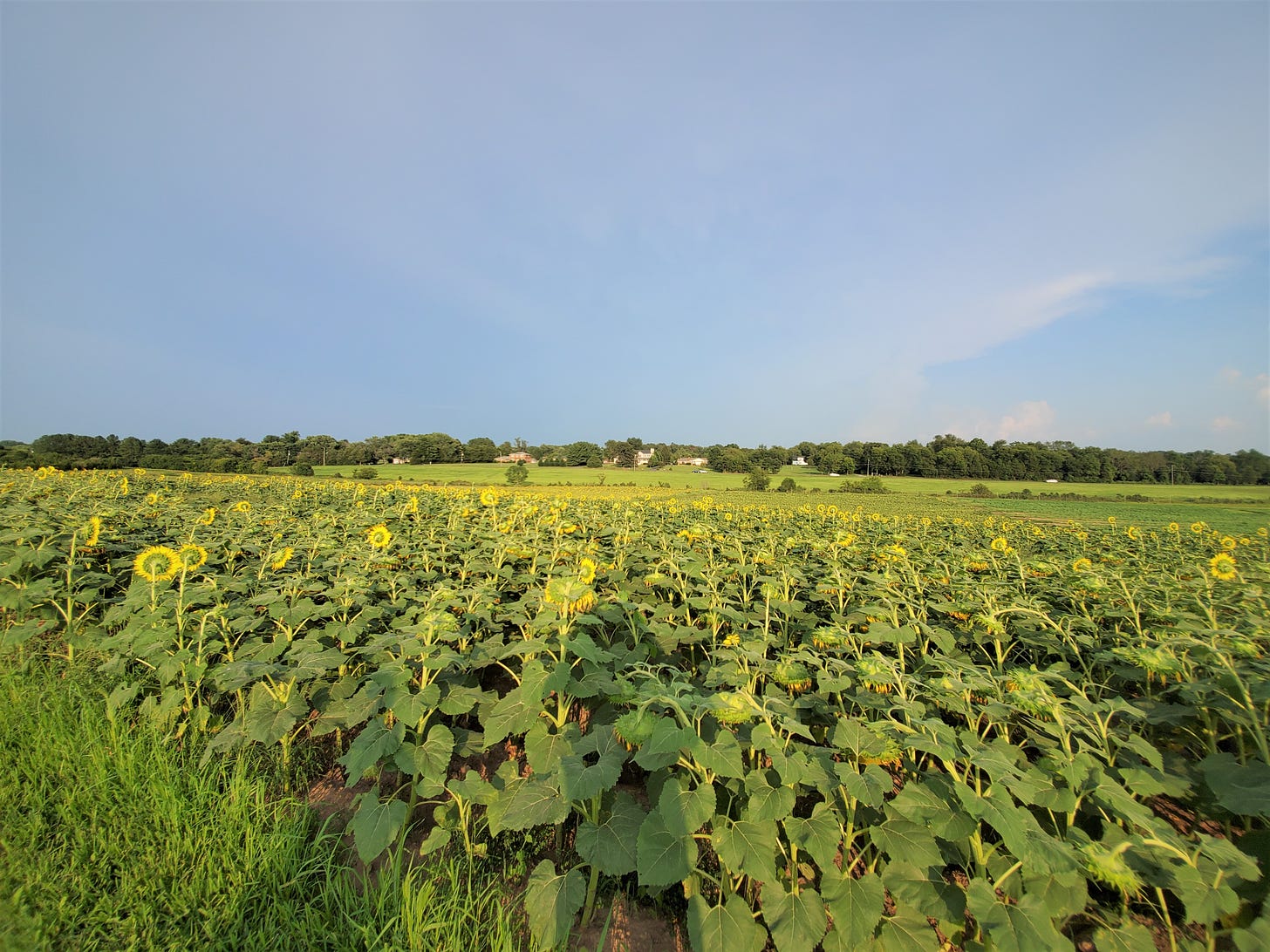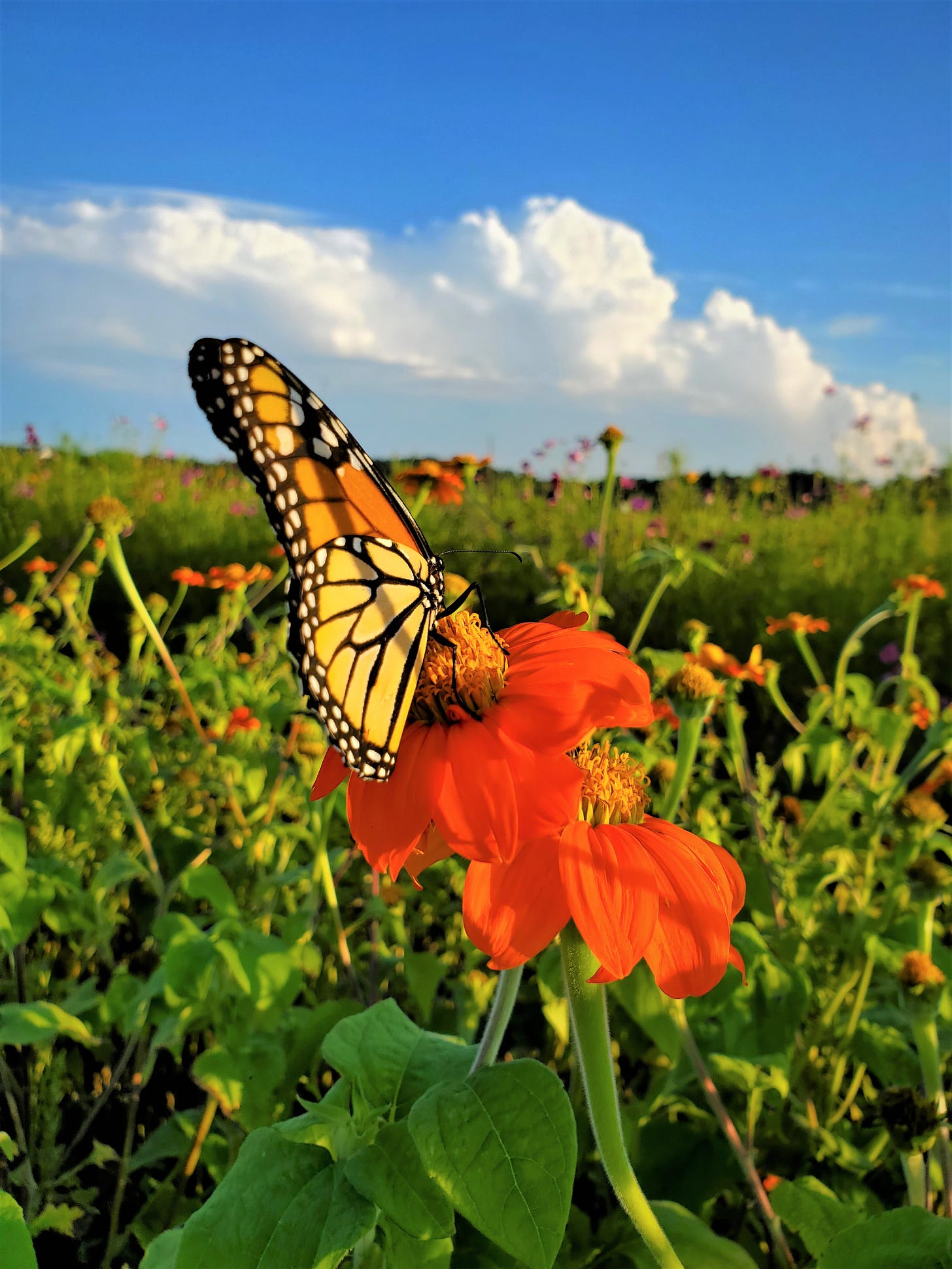In Tuesday’s piece, I mentioned a flower farm in Prince William County, Virginia, where my wife and I go twice a year to pick flowers (tulips in the spring, sunflowers in the summer.)
It’s 50 miles from Washington, D.C., and it’s in a pretty rural area. But over the last 20 years, and continuing to today, exurban sprawl has edged all the way out here. Right across from the driveway to the flower farm is a sign for new homes. Like so many of these relatively low-margin, land-heavy enterprises—old amusement parks, nurseries and garden centers, driving ranges or mini-golf courses, orchards—I’m afraid they won’t be able to hold on as the area suburbanizes.
I obviously don’t consider myself a NIMBY, but I think I’m a NIMBY when it comes to new housing this far from, well, anything. I think it’s important that the countryside and its open space be preserved, at some reasonable distance from the regional population centers. For more on this point, check out my recent piece in Strong Towns and follow-up here at the newsletter.
Let me show you some photos of the farm. Here are some from tulip season, which just ended.
And here’s sunflower season, typically in August:
I wouldn’t call this an “escape from the city,” but it’s a really peaceful, relaxing little trip. The farm is always crowded, and the crowd is quite diverse—people of all races, for one, but also older couples or groups, groups of college or high school students, families with young children, etc. There’s a jump castle set up on one corner of the property, a few old tractors and other fodder for photos, and a chicken coop. It makes me feel like a kid again.
This is the true meaning of “open space” or “green space.” Imagine if instead of 50 miles from the urban core, and way past the point where reasonably useful transit goes, this sort of thing were easily accessible to people in the city or inner suburbs? As the ring of low-density development between the urban core and the countryside expands, more and more people have no easy way to get to farms, orchards, and other businesses that almost always disappear once land use transitions to suburban.
Now, I don’t blame these large landowners for “selling to developers.” Everyone is doing what is in their economic interest, and often selling to developers allows these owners to retire comfortably. Some of these businesses, like a horseback riding ranch my wife and I visited a few years ago, barely make money.
But at the same time, it’s just bad land use to pave over tens of miles with so much centerless, almost-nothing development: enough to ruin the rural character, but not enough to support things like transit or a diverse business ecosystem. We’re used to seeing things like yards and single-family zoning as ways to capture just a little bit of the erstwhile countryside. But what if we actually preserved it?
Related Reading:
Have You Ever Seen a Nursery Like This?
A Hint of America’s Lost Urban History
Thanks for reading! Please consider upgrading to a paid subscription to help support this newsletter. You’ll get a weekend subscribers-only post, plus full access to the archive of over 300 posts and growing—more than one full year! And you’ll help ensure more material like this!










One of my favorite things about NoVa is the balance of dense, modern development and beautiful, scenic nature.